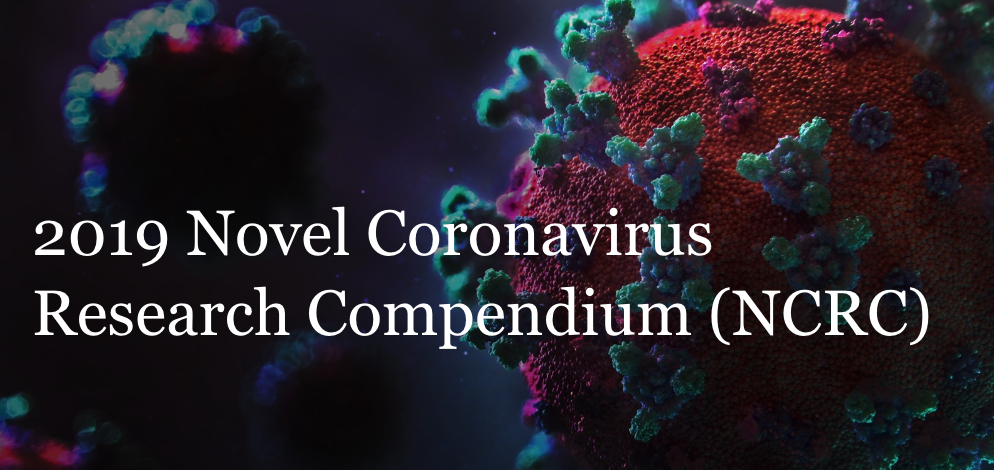mRNA vaccination boosts cross-variant neutralizing antibodies elicited by SARS-CoV-2 infection
This article has been Reviewed by the following groups
Discuss this preprint
Start a discussion What are Sciety discussions?Listed in
- Evaluated articles (ScreenIT)
- Evaluated articles (NCRC)
- High interest articles (NCRC)
Abstract
Postinfection immune protection against severe acute respiratory syndrome coronavirus 2 reinfection is not fully understood. It will be devastating if waves of new variants emerge that undermine natural immune protection. Stamatatos et al. investigated immune responsiveness 4 to 8 months after previously infected individuals were given a messenger RNA–based vaccine developed for the original Wuhan variant (see the Perspective by Crotty). Before vaccination, postinfection serum antibody neutralization responses to virus variants were variable and weak. Vaccination elevated postinfection serum-neutralizing capacity approximately 1000-fold against Wuhan-Hu-1 and other strains, and serum neutralization against the variant B.1.351 was enhanced. Although responses were relatively muted against the variant, they still showed characteristic memory responses. Vaccination with the Wuhan-Hu-1 variant may thus offer a valuable boost to protective responses against subsequent infection with variant viruses.
Science , abg9175, this issue p. 1413 ; see also abj2258, p. 1392
Article activity feed
-
-

SciScore for 10.1101/2021.02.05.21251182: (What is this?)
Please note, not all rigor criteria are appropriate for all manuscripts.
Table 1: Rigor
Institutional Review Board Statement Consent: Informed consent was obtained from all participants and the Fred Hutchinson Cancer Research Center Institutional Review Board approved the studies and procedures (IR10440 and IR5567).
IRB: Informed consent was obtained from all participants and the Fred Hutchinson Cancer Research Center Institutional Review Board approved the studies and procedures (IR10440 and IR5567).Randomization not detected. Blinding Serum from pre-pandemic controls were blindly selected at random from the study, “Establishing Immunologic Assays for Determining HIV-1 Prevention and Control”, with no considerations made for age, or sex. Power Analysis not detected. Sex as a biological … SciScore for 10.1101/2021.02.05.21251182: (What is this?)
Please note, not all rigor criteria are appropriate for all manuscripts.
Table 1: Rigor
Institutional Review Board Statement Consent: Informed consent was obtained from all participants and the Fred Hutchinson Cancer Research Center Institutional Review Board approved the studies and procedures (IR10440 and IR5567).
IRB: Informed consent was obtained from all participants and the Fred Hutchinson Cancer Research Center Institutional Review Board approved the studies and procedures (IR10440 and IR5567).Randomization not detected. Blinding Serum from pre-pandemic controls were blindly selected at random from the study, “Establishing Immunologic Assays for Determining HIV-1 Prevention and Control”, with no considerations made for age, or sex. Power Analysis not detected. Sex as a biological variable Cell Lines: All cell lines were incubated at 37°C in the presence of 5% CO2. 293-6E (human female) and 293T cells (human female) cells were maintained in Freestyle 293 media with gentle shaking. Cell Line Authentication not detected. Table 2: Resources
Experimental Models: Cell Lines Sentences Resources Cell Lines: All cell lines were incubated at 37°C in the presence of 5% CO2. 293-6E (human female) and 293T cells (human female) cells were maintained in Freestyle 293 media with gentle shaking. 293Tsuggested: NoneRecombinant CoV proteins and mAbs: A stabilized version of the recombinant SARS-CoV-2 spike protein (S2P) and the SARS CoV-2 RBD were produced in 293E cells as previously described (8, 22) 293Esuggested: NoneRecombinant CV1, CV30 and AMMO1 were expressed in 293 cells and purified using protein A resin as previously described (22, 79). 293suggested: NCI-DTP Cat# NCI-293TT, RRID:CVCL_1D85)The media was aspirated from 293T-ACE2 cells and 100 µL of the virus-antibody mixture was added. 293T-ACE2suggested: RRID:CVCL_YZ65)Software and Algorithms Sentences Resources CV3-1, CV3-25, CV2-75 mAbs were isolated from donors previously infected with SARS-CoV-2 using recombinant S2P as bait using methods outlined in (22) Generation of plasmids expressing SARS-CoV-1 and SARS-CoV-2 spike variants: To generate a plasmid encoding the SARS-CoV-2 spike B.1.351 variant (pHDM-SARS-CoV-2-Spike-B.1.351) we designed primers that anneal 5’ of the D80 codon and just 3’ of the A701 codon on the pHDM-SARS-CoV-2 Spike Wuhan-Hu-1 plasmid that were used to amplify cDNA corresponding to the N and C termini of the spike protein and the plasmid backbone using Platinum SuperFi II DNA Polymerase (Thermofisher Cat# 12368010) according to the manufacturer’s instructions. Thermofisher Cat#suggested: NoneThe antibody concentration, or serum dilution that neutralized 50% or 80% of infectivity (IC50 and IC80 for mAbs, ID50 and ID80 for serum) was interpolated from the neutralization curves determined using the log(inhibitor) vs. response -- Variable slope (four parameters) fit using automatic outlier detection in Graphpad Prism Software. Graphpad Prismsuggested: (GraphPad Prism, RRID:SCR_002798)The mean fluorescence PE intensity (MFI) on live cells was measured on a BD LSR-II cytometer and the data analyzed using Flow Jo version 9.9.4. Flow Josuggested: (FlowJo, RRID:SCR_008520)Results from OddPub: We did not detect open data. We also did not detect open code. Researchers are encouraged to share open data when possible (see Nature blog).
Results from LimitationRecognizer: An explicit section about the limitations of the techniques employed in this study was not found. We encourage authors to address study limitations.Results from TrialIdentifier: No clinical trial numbers were referenced.
Results from Barzooka: We did not find any issues relating to the usage of bar graphs.
Results from JetFighter: We did not find any issues relating to colormaps.
Results from rtransparent:- Thank you for including a conflict of interest statement. Authors are encouraged to include this statement when submitting to a journal.
- Thank you for including a funding statement. Authors are encouraged to include this statement when submitting to a journal.
- No protocol registration statement was detected.
-

Our take
This study, available as a preprint and thus not yet peer reviewed, found that sera from ten individuals who had recovered from SARS-CoV-2 infection showed weak neutralizing antibody activity against the Wuhan Hu1 variant, and only 5 of ten sera were able to weakly neutralize the B.1.351 variant that emerged in South Africa. After these donors received the first dose of the Pfizer or Moderna mRNA vaccines, however, there was robust neutralizing antibody activity against both strains that was approximately one thousandfold higher than pre-vaccination, though titers were 2-3 times lower against the B.1.351 variant. Although these results suggest that individuals who have previously been infected with SARS-CoV-2 may receive significant protection from vaccination, it is important to note that the neutralizing antibody …
Our take
This study, available as a preprint and thus not yet peer reviewed, found that sera from ten individuals who had recovered from SARS-CoV-2 infection showed weak neutralizing antibody activity against the Wuhan Hu1 variant, and only 5 of ten sera were able to weakly neutralize the B.1.351 variant that emerged in South Africa. After these donors received the first dose of the Pfizer or Moderna mRNA vaccines, however, there was robust neutralizing antibody activity against both strains that was approximately one thousandfold higher than pre-vaccination, though titers were 2-3 times lower against the B.1.351 variant. Although these results suggest that individuals who have previously been infected with SARS-CoV-2 may receive significant protection from vaccination, it is important to note that the neutralizing antibody response is only one part of the immune system’s protection against SARS-CoV-2 infection, and its correlation with overall protection against infection and severe disease is not fully understood.
Study design
other
Study population and setting
This in vitro study assessed the susceptibility of the B.1.351 SARS-CoV-2 variant to sera from 10 convalescent donors who had recovered from COVID-19 and who had received a single dose of the Pfizer (n=7) or Moderna (n=3) mRNA SARS-CoV-2 vaccine. Responses were assessed before vaccination (median 202 days after symptom onset) and after vaccination (median 16 days later). The authors also assessed neutralizing activity of monoclonal antibodies (mAbs) from infected patients who had not been vaccinated. The B.1.351 variant, which was first observed in South Africa, is characterized by mutations in the spike protein (S) that have led to concerns over possible increased infectivity and evasion of neutralizing antibody responses. The authors evaluated neutralizing effects on: 1) pseudovirus expressing the S protein from the Wuhan Hu1 variant, which was used for encoding S protein in the mRNA vaccines; 2) pseudovirus expressing S protein with B.1.351-defining mutations; and 3) SARS-CoV-1 pseudovirus.
Summary of main findings
Using mAbs targeting various epitopes (in the receptor binding domain, the N-terminal domain, and the S2 subunit), the authors found lower neutralizing activity against the B.1.351 strain relative to the Wuhan Hu1 variant. Pre-vaccine sera from 9 of 10 donors weakly neutralized the Wuhan Hu1 variant, but only 5 of 10 were able to weakly neutralize the B.1.351 variant. Post-vaccine sera exhibited an approximately 1000-fold increase in neutralizing Ab response; and median neutralizing Ab titers (ID50) were nearly three times higher for the Wuhan Hu1 strain than for the B.1.351 strain (14,100 vs. 5,156, p=0.002). Although pre-vaccine sera could not neutralize SARS-CoV-1 pseudovirus, all post-vaccination sera neutralized SARS-CoV1 at titers that were approximately 100-fold lower than those neutralizing the Wuhan Hu1 variant of SARS-CoV-2.
Study strengths
Sera were tested for neutralizing activity both before and after vaccination, limiting potential confounding by donor characteristics. Testing for neutralizing activity against SARS-CoV-1 provides information about the breadth of immune response to more divergent strains.
Limitations
Because immunological correlates of protection against SARS-CoV-2 infection are not well understood, neutralizing Ab activity in vitro against SARS-CoV-2 may not correlate well with any actual resistance to infection or severe disease. Sera from only 10 donors were assessed, with considerable variation in neutralizing titers; a larger sample would improve the ability to distinguish true differences from random variation. Because of the small sample, it was not possible to assess any differences between those receiving Pfizer and Moderna vaccines.
Value added
This provides some of the first evidence regarding immunogenicity conferred by vaccination among people with previous SARS-CoV-2 infection, particularly with respect to emerging variants of concern.
-


